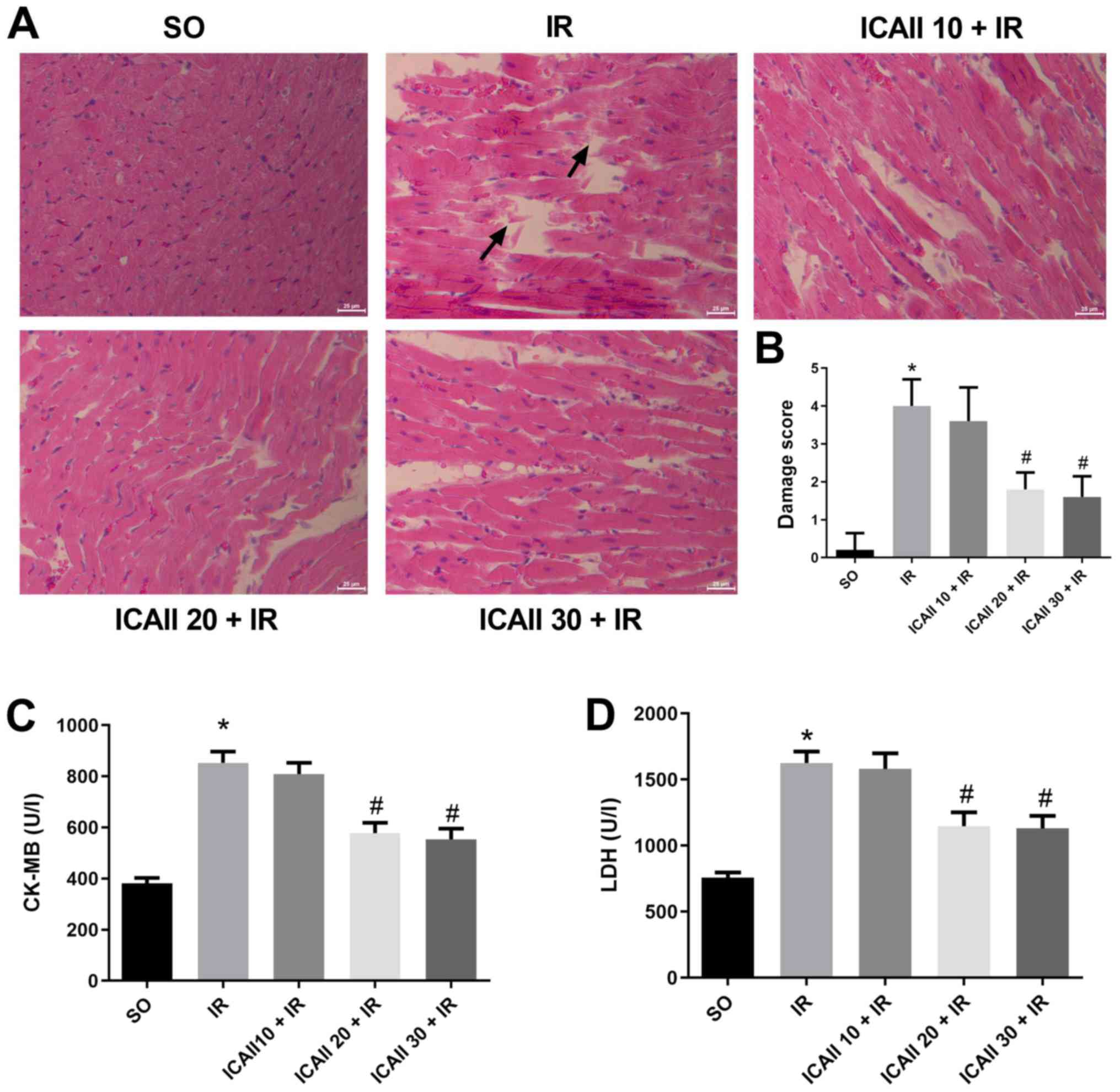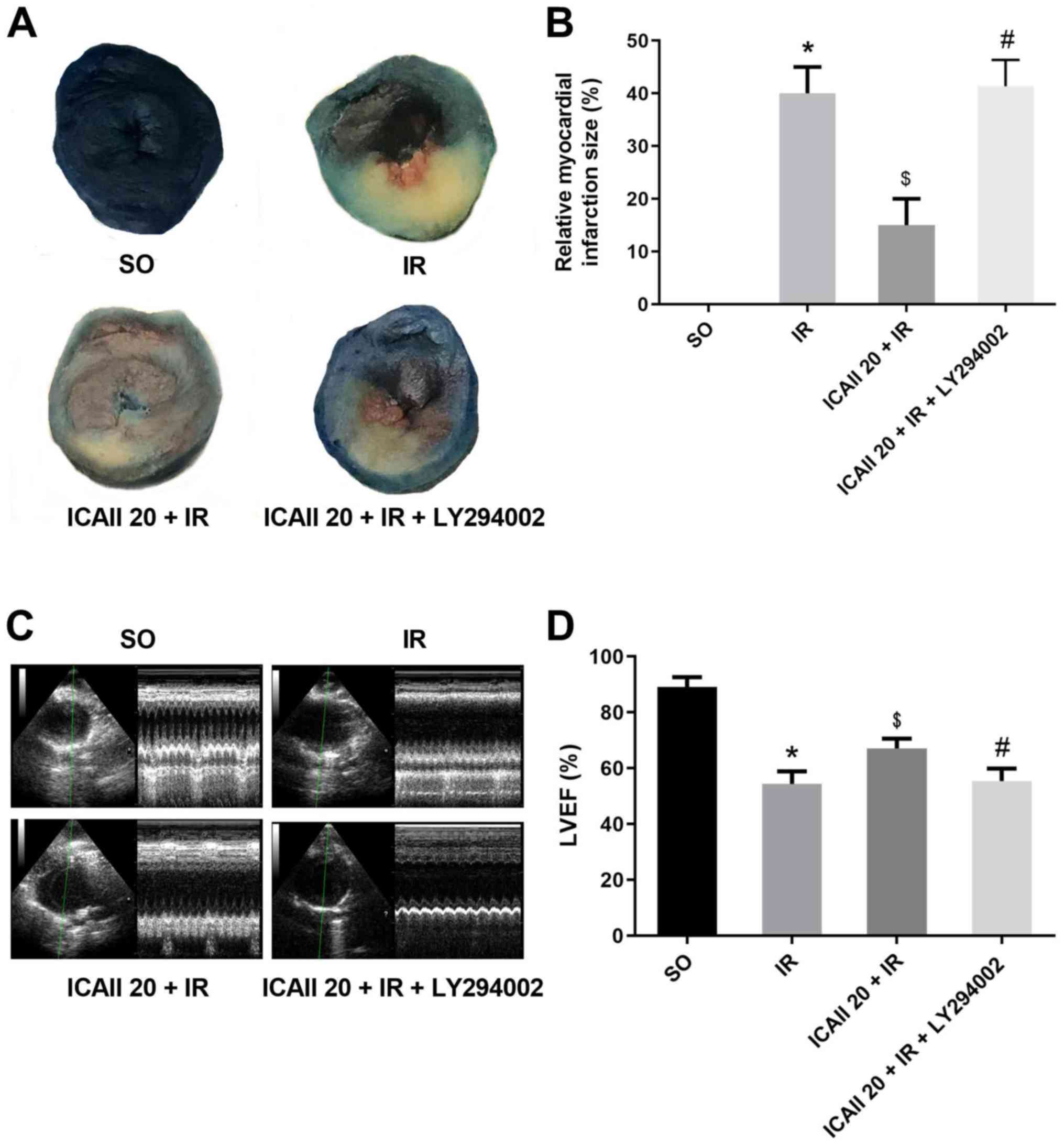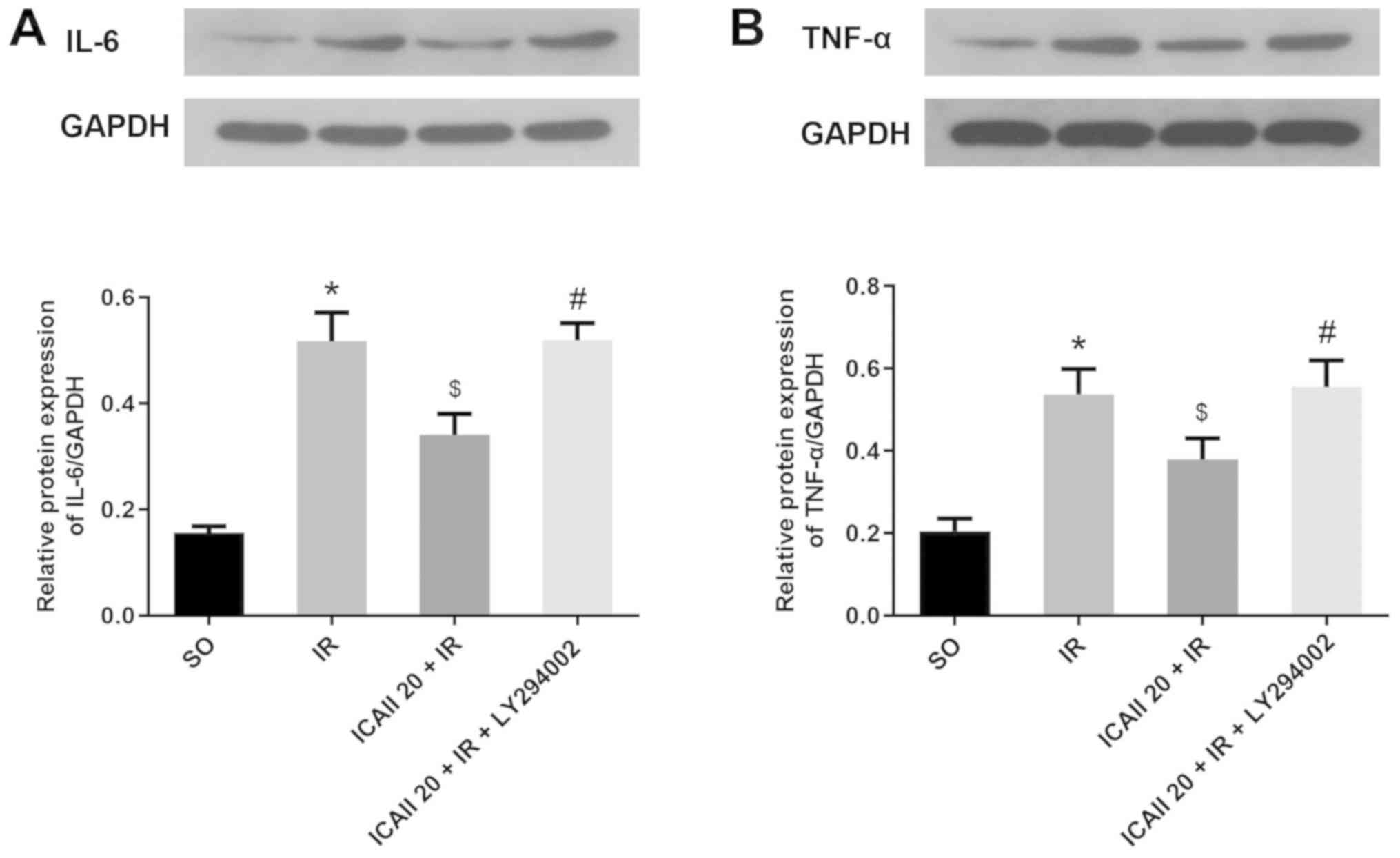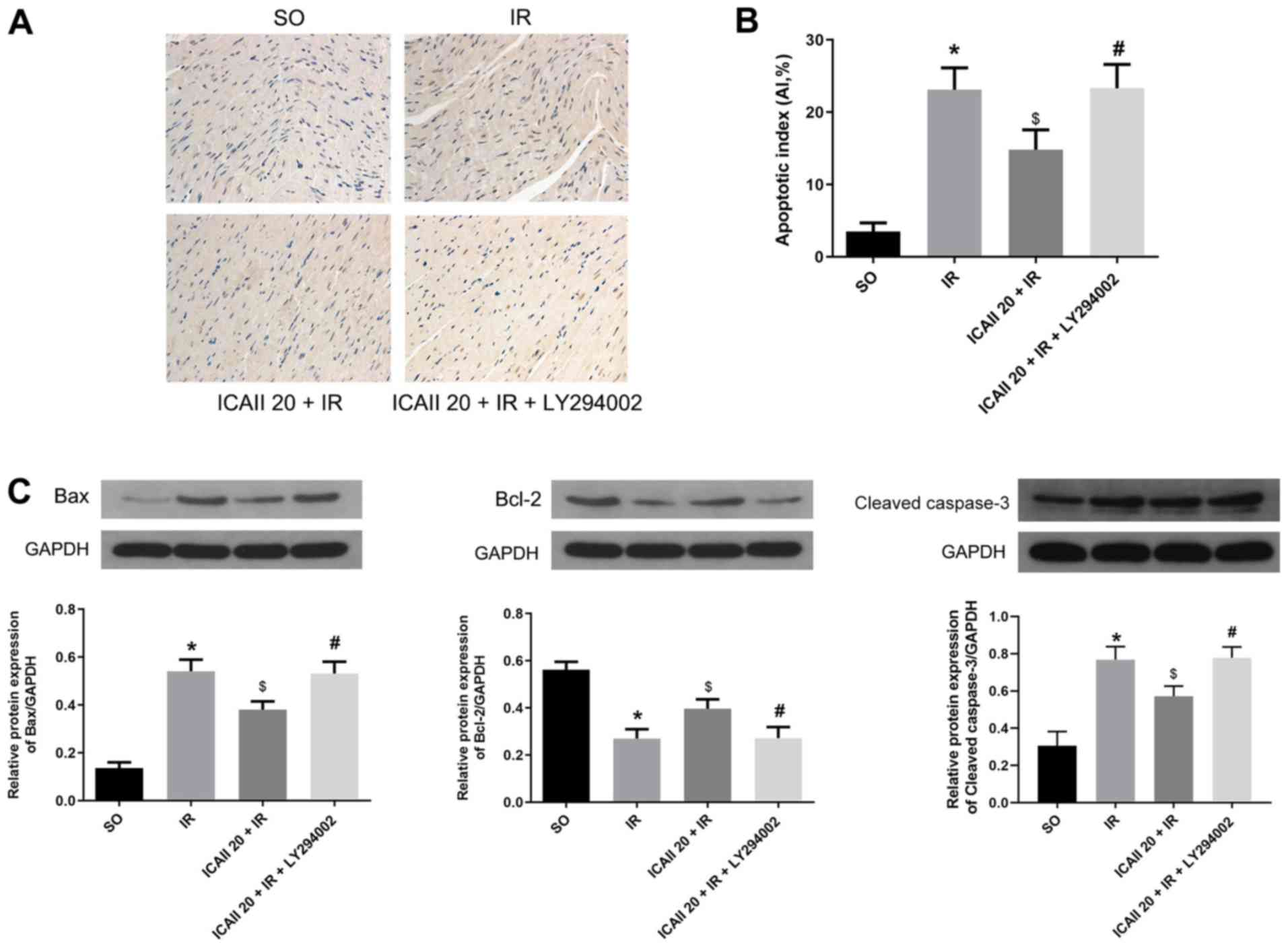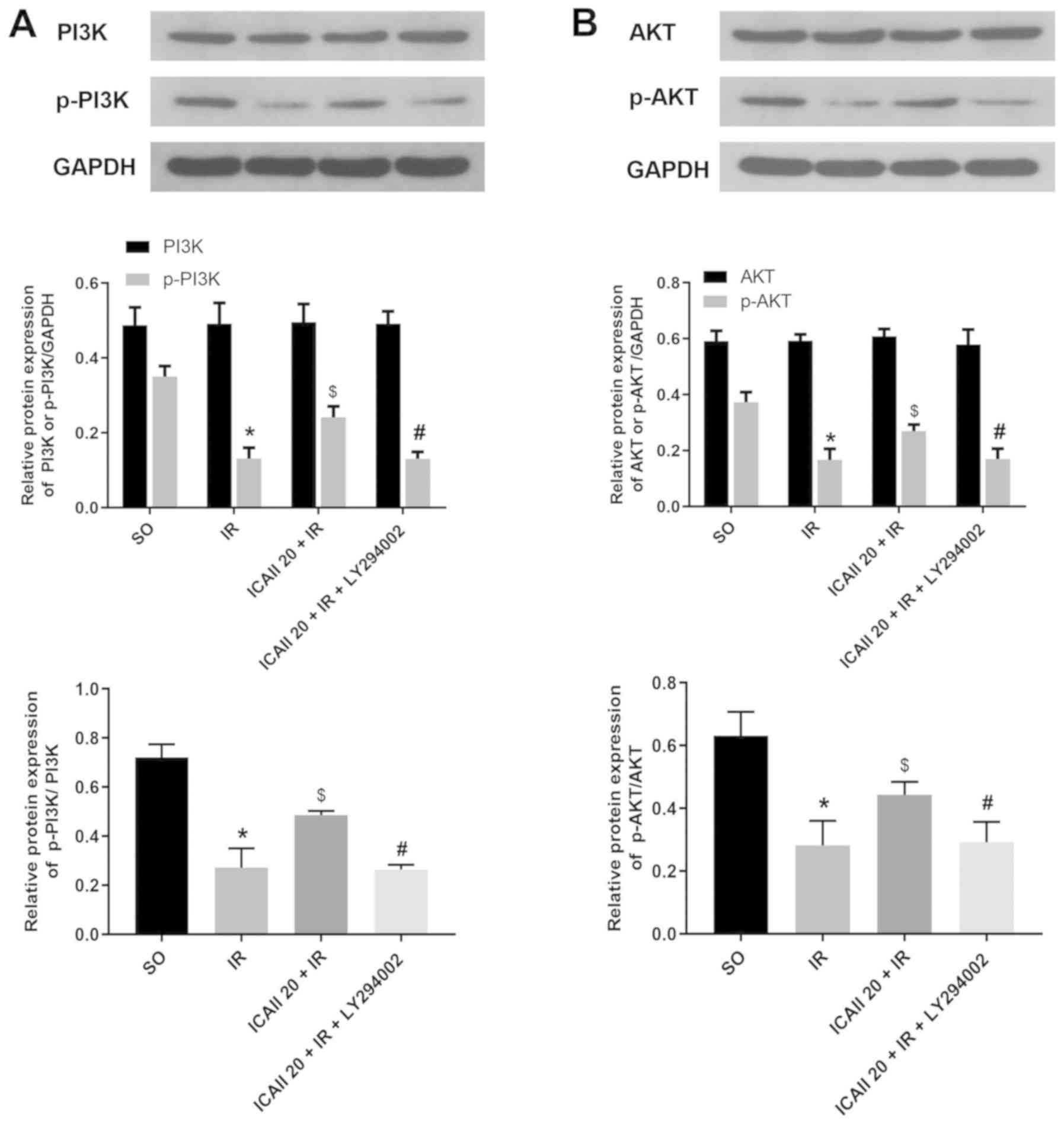|
1
|
Lee SJ, Lee CK, Kang S, Park I, Kim YH,
Kim SK, Hong SP, Bae H, He Y, Kubota Y and Koh GY: Angiopoietin-2
exacerbates cardiac hypoxia and inflammation after myocardial
infarction. J Clin Invest. 120:3151–5033. 2018.
|
|
2
|
Corrrell CU, Robinson DG, Schooler NR,
Brunette MF, Mueser KT, Rosenheck RA, Marcy P, Addington J, Estroff
SE, Robinson J, et al: Cardiometabolic risk in patients with
first-episode schizophrenia spectrum disorders: Baseline results
from the RAISE-ETP study. JAMA Psychiatry. 71:1350–1363. 2014.
View Article : Google Scholar : PubMed/NCBI
|
|
3
|
Maznyczka AM, Oldroyd KG, McCartney P,
McEntegart M and Berry C: The potential use of the index of
microcirculatory resistance to guide stratification of patients for
adjunctive therapy in acute myocardial infarction. JACC Cardiovasc
Interv. 12:951–966. 2019. View Article : Google Scholar : PubMed/NCBI
|
|
4
|
Kimura T, Tajiri K, Sato A, Sakai S, Wang
Z, Yoshida T, Uede T, Hiroe M, Aonuma K, Ieda M and Imanaka-Yoshida
K: Tenascin-C accelerates adverse ventricular remodeling after
myocardial infarction by modulating macrophage polarization.
Cardiovasc Res. 115:614–624. 2018. View Article : Google Scholar
|
|
5
|
Bi X, Zhang G, Wang X, Nguyen C, May HI,
Li X, Al-Hashimi AA, Austin RC, Gillette TG, Fu G, et al:
Endoplasmic reticulum chaperone GRP78 protects heart from
Ischemia/Reperfusion injury through akt activation. Circ Res.
122:1545–1554. 2018. View Article : Google Scholar : PubMed/NCBI
|
|
6
|
Shah M, Patil S, Patel B, Agarwal M,
Davila CD, Garg L, Agrawal S, Kapur NK and Jorde UP: Causes and
predictors of 30-day readmission in patients with acute myocardial
infarction and cardiogenic shock. Circ Heart Fail. 11:e0043102018.
View Article : Google Scholar : PubMed/NCBI
|
|
7
|
Zhou H, Ma Q, Zhu P, Ren J, Reiter RJ and
Chen Y: Protective role of melatonin in cardiac
ischemia-reperfusion injury: From pathogenesis to targeted therapy.
J Pineal Res. 64:2018. View Article : Google Scholar
|
|
8
|
Yang Y, Lv J, Jiang S, Ma Z, Wang D, Hu W,
Deng C, Fan C, Di S, Sun Y and Yi W: The emerging role of Toll-like
receptor 4 in myocardial inflammation. Cell Death Dis. 7:e22342016.
View Article : Google Scholar : PubMed/NCBI
|
|
9
|
Zhao D, Feng P, Sun Y, Qin Z, Zhang Z, Tan
Y, Gao E, Lau WB, Ma X, Yang J, et al: Cardiac-derived CTRP9
protects against myocardial ischemia/reperfusion injury via
calreticulin-dependent inhibition of apoptosis. Cell Death Dis.
9:7232018. View Article : Google Scholar : PubMed/NCBI
|
|
10
|
Li X, Hu X, Wang J, Xu W, Yi C, Ma R and
Jiang H: Short-Term hesperidin pre-treatment attenuates rat
myocardial Ischemia/Reperfusion injury by inhibiting high mobility
group box 1 protein expression via the PI3K/Akt pathway. Cell
Physiol Biochem. 39:1850–1862. 2016. View Article : Google Scholar : PubMed/NCBI
|
|
11
|
Li H, Xu Y, Guan R, Matheu M, Lei H, Tian
W, Gao Z, Lin G, Guo Y, Xin Z and Song W: Icariside II prevents
high-glucose-induced injury on human cavernous endothelial cells
through Akt-eNOS signaling pathway. Andrology. 3:408–416. 2015.
View Article : Google Scholar : PubMed/NCBI
|
|
12
|
Deng Y, Long L, Wang K, Zhou J, Zeng L, He
L and Gong Q: Icariside II, a Broad-Spectrum anti-cancer agent,
reverses Beta-Amyloid-Induced cognitive impairment through reducing
inflammation and apoptosis in rats. Front Pharmacol. 8:392017.
View Article : Google Scholar : PubMed/NCBI
|
|
13
|
Wu Y, Qian Z, Fu S, Yue Y, Li Y, Sun R,
Huang B and Yang D: IcarisideII improves left ventricular
remodeling in spontaneously hypertensive rats by inhibiting the
ASK1-JNK/p38 signaling pathway. Eur J Pharmacol. 819:68–79. 2018.
View Article : Google Scholar : PubMed/NCBI
|
|
14
|
Yang L, Peng C, Xia J, Zhang W, Tian L,
Tian Y, Yang X and Cao Y: Effects of icariside II ameliorates
diabetic cardiomyopathy in streptozotocin-induced diabetic rats by
activating Akt/NOS/NF-κB signaling. Mol Med Rep. 17:4099–4105.
2018.PubMed/NCBI
|
|
15
|
Rani N, Bharti S, Manchanda M, Nag TC, Ray
R, Chauhan SS, Kumari S and Arya DS: Regulation of heat shock
proteins 27 and 70, p-Akt/p-eNOS and MAPKs by Naringin Dampens
myocardial injury and dysfunction in vivo after
ischemia/reperfusion. PLoS One. 8:e825772013. View Article : Google Scholar : PubMed/NCBI
|
|
16
|
Deng Y, Xiong D, Yin C, Liu B, Shi J and
Gong Q: Icariside II protects against cerebral ischemia-reperfusion
injury in rats via nuclear factor-κB inhibition and peroxisome
proliferator- activated receptor up-regulation. Neurochem Int.
96:56–61. 2016. View Article : Google Scholar : PubMed/NCBI
|
|
17
|
Guide for the Care and Use of Laboratory
Animals Institute of Laboratory Animal Research. Commission on Life
Sciences, National Research Council. 1401996.ISBN:0-309-58869-3,
6×9.
|
|
18
|
Valle RJ, Mauro AG, Devarakonda T,
Marchetti C, He J, Kim E, Filippone S, Das A, Toldo S, Abbate A and
Salloum FN: Reperfusion therapy with recombinant human relaxin-2
(Serelaxin) attenuates myocardial infarct size and NLRP3
inflammasome following ischemia/reperfusion injury via
eNOS-dependent mechanism. Cardiovasc Res. 113:609–619.
2017.PubMed/NCBI
|
|
19
|
Zheng Y, Deng Y, Gao JM, Lv C, Lang LH,
Shi JS, Yu CY and Gong QH: Icariside II inhibits
lipopolysaccharide-induced inflammation and amyloid production in
rat astrocytes by regulating IKK/IκB/NF-κB/BACE1 signaling pathway.
Acta Pharmacol Sin. 41:154–162. 2020. View Article : Google Scholar : PubMed/NCBI
|
|
20
|
Fu S, Li YL, Wu YT, Yue Y, Qian ZQ and
Yang DL: Icariside II attenuates myocardial fibrosis by inhibiting
nuclear factor-κB and the TGF-β1/Smad2 signaling pathway in
spontaneously hypertensive rats. Biomed Pharmacother. 100:64–71.
2018. View Article : Google Scholar : PubMed/NCBI
|
|
21
|
Yan BY, Pan CS, Mao XW, Yang L, Liu YY,
Yan L, Mu HN, Wang CS, Sun K, Liao FL, et al: Icariside II improves
cerebral microcirculatory disturbance and alleviates hippocampal
injury in gerbils after ischemia-reperfusion. Brain Res.
1573:63–73. 2014. View Article : Google Scholar : PubMed/NCBI
|
|
22
|
Liu JY, Shang J, Mu XD and Gao ZY:
Protective effect of down-regulated microRNA-27a mediating high
thoracic epidural block on myocardial ischemia-reperfusion injury
in mice through regulating ABCA1 and NF-κB signaling pathway.
Biomed Pharmacother. 112:1086062019. View Article : Google Scholar : PubMed/NCBI
|
|
23
|
Yang J, Guo X, Yang J, Ding JW, Li S, Yang
R, Fan ZX and Yang CJ: RP105 protects against apoptosis in
ischemia/reperfusion-induced myocardial damage in rats by
suppressing TLR4-mediated signaling pathways. Cell Physiol Biochem.
36:2137–2148. 2015. View Article : Google Scholar : PubMed/NCBI
|
|
24
|
Zhang BF, Jiang H, Chen J, Guo X, Li Y, Hu
Q and Yang S: Nobiletin ameliorates myocardial ischemia and
reperfusion injury by attenuating endoplasmic reticulum
stress-associated apoptosis through regulation of the PI3K/AKT
signal pathway. Int Immunopharmacol. 73:98–107. 2019. View Article : Google Scholar : PubMed/NCBI
|
|
25
|
Yu JS and Cui W: Proliferation, survival
and metabolism: The role of PI3K/AKT/mTOR signaling in pluripotency
and cell fate determination. Development. 143:3050–3060. 2016.
View Article : Google Scholar : PubMed/NCBI
|
|
26
|
Williams DL, Ozment-Skelton T and Li C:
Modulation of the phosphoinositide 3-kinase signaling pathway
alters host response to sepsis, inflammation, and
ischemia/reperfusion injury. Shock. 25:432–439. 2006. View Article : Google Scholar : PubMed/NCBI
|
|
27
|
Hao YL, Fang HC, Zhao HL, Li XL, Luo Y, Wu
BQ, Fu MJ, Liu W, Liang JJ and Chen XH: The role of microRNA-1
targeting of MAPK3 in myocardial ischemia-reperfusion injury in
rats undergoing sevoflurane preconditioning via the PI3K/Akt
pathway. Am J Physiol Cell Physiol. 315:C380–C388. 2018. View Article : Google Scholar : PubMed/NCBI
|
|
28
|
Liu S, Ai Q, Feng K, Li Y and Liu X: The
cardioprotective effect of dihydromyricetin prevents
ischemia-reperfusion-induced apoptosis in vivo and in vitro via the
PI3K/Akt and HIF-1alpha signaling pathways. Apoptosis.
21:1366–1385. 2016. View Article : Google Scholar : PubMed/NCBI
|
|
29
|
Li Q, Shen L, Wang Z, Jiang HP and Liu LX:
Tanshinone IIA protects against myocardial ischemia reperfusion
injury by activating the PI3K/Akt/mTOR signaling pathway. Biomed
Pharmacother. 84:106–114. 2016. View Article : Google Scholar : PubMed/NCBI
|
|
30
|
Zeng C, Jiang W, Zheng R, He C, Li J and
Xing J: Cardioprotection of tilianin ameliorates myocardial
ischemia-reperfusion injury: Role of the apoptotic signaling
pathway. PLoS One. 13:e1938452018.
|
|
31
|
Pan T, Shi X, Chen H, Chen R, Wu D, Lin Z,
Zhang J and Pan J: Correction to: Geniposide suppresses
interleukin-1β-induced inflammation and apoptosis in rat
chondrocytes via the PI3K/Akt/NF-κB signaling pathway.
Inflammation. 42:404–405. 2019. View Article : Google Scholar : PubMed/NCBI
|
|
32
|
Luo G, Xu B and Huang Y: Icariside II
promotes the osteogenic differentiation of canine bone marrow
mesenchymal stem cells via the PI3K/AKT/mTOR/S6K1 signaling
pathways. Am J Transl Res. 9:2077–2087. 2017.PubMed/NCBI
|
|
33
|
Wu J, Xu J, Eksioglu EA, Chen X, Zhou J,
Fortenbery N, Wei S and Dong J: Icariside II induces apoptosis of
melanoma cells through the downregulation of survival pathways.
Nutr Cancer. 65:110–117. 2013. View Article : Google Scholar : PubMed/NCBI
|
|
34
|
Wu J, Zuo F, Du J, Wong PF, Qin H and Xu
J: Icariside II induces apoptosis via inhibition of the EGFR
pathways in A431 human epidermoid carcinoma cells. Mol Med Rep.
8:597–602. 2013. View Article : Google Scholar : PubMed/NCBI
|
|
35
|
Gao J, Long L, Xu F, Feng L, Liu Y, Shi J
and Gong Q: Icariside II, a phosphodiesterase 5 inhibitor,
attenuates cerebral ischaemia/reperfusion injury by inhibiting
glycogen synthase kinase-3β-mediated activation of autophagy. Br J
Pharmacol. 177:1434–1452. 2020. View Article : Google Scholar : PubMed/NCBI
|
|
36
|
Cao X, Zhu N, Zhang Y, Chen Y, Zhang J, Li
J, Hao P, Gao C and Li L: Y-box protein 1 promotes
hypoxia/reoxygenation- or ischemia/reperfusion-induced
cardiomyocyte apoptosis via SHP-1-dependent STAT3 inactivation. J
Cell Physiol. Jan 22–2020.doi: 10.1002/jcp.29474 (Online ahead of
print). View Article : Google Scholar
|
|
37
|
Li CY, Yang P, Jiang YL, Lin Z, Pu YW, Xie
LQ, Sun L and Lu D: Ginsenoside Rb1 attenuates cardiomyocyte
apoptosis induced by myocardial ischemia reperfusion injury through
mTOR signal pathway. Biomed Pharmacother. 125:1099132020.
View Article : Google Scholar : PubMed/NCBI
|
|
38
|
Wang L, Liu XH, Chen H, Chen ZY, Weng XD,
Qiu T and Liu L: Picroside II protects rat kidney against
ischemia/reperfusion-induced oxidative stress and inflammation by
the TLR4/NF-κB pathway. Exp Ther Med. 9:1253–1258. 2015. View Article : Google Scholar : PubMed/NCBI
|
|
39
|
Liu K, Wang F, Wang S, Li WN and Ye Q:
Mangiferin attenuates myocardial ischemia-reperfusion injury via
MAPK/Nrf-2/HO-1/NF-κB in vitro and in vivo. Oxid Med Cell Longev.
2019:72854342019. View Article : Google Scholar : PubMed/NCBI
|
|
40
|
Zhang Y, Liu D, Hu H, Zhang P, Xie R and
Cui W: HIF-1α/BNIP3 signaling pathway-induced-autophagy plays
protective role during myocardial ischemia-reperfusion injury.
Biomed Pharmacother. 120:1094642019. View Article : Google Scholar : PubMed/NCBI
|
|
41
|
He X, Li S, Fang X and Liao Y: TDCPP
protects cardiomyocytes from hypoxia-reoxygenation injury induced
apoptosis through mitigating calcium overload and promotion GSK-3β
phosphorylation. Regul Toxicol Pharmacol. 92:39–45. 2018.
View Article : Google Scholar : PubMed/NCBI
|















